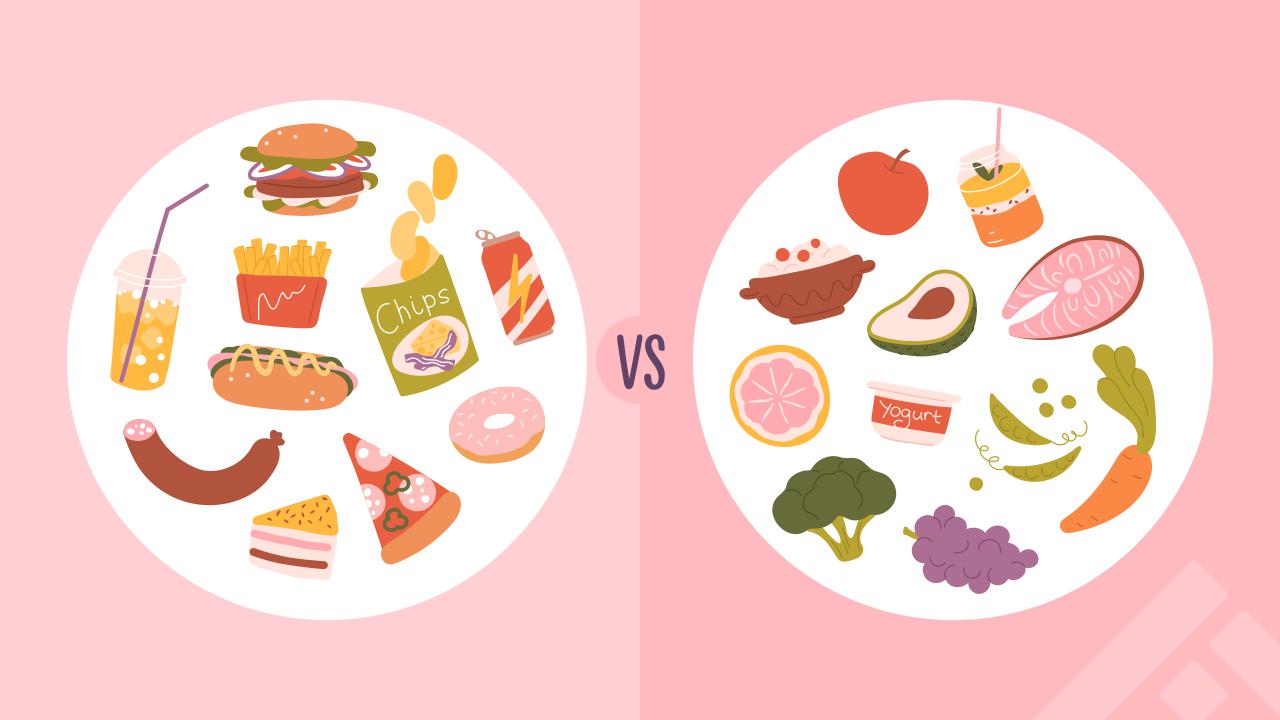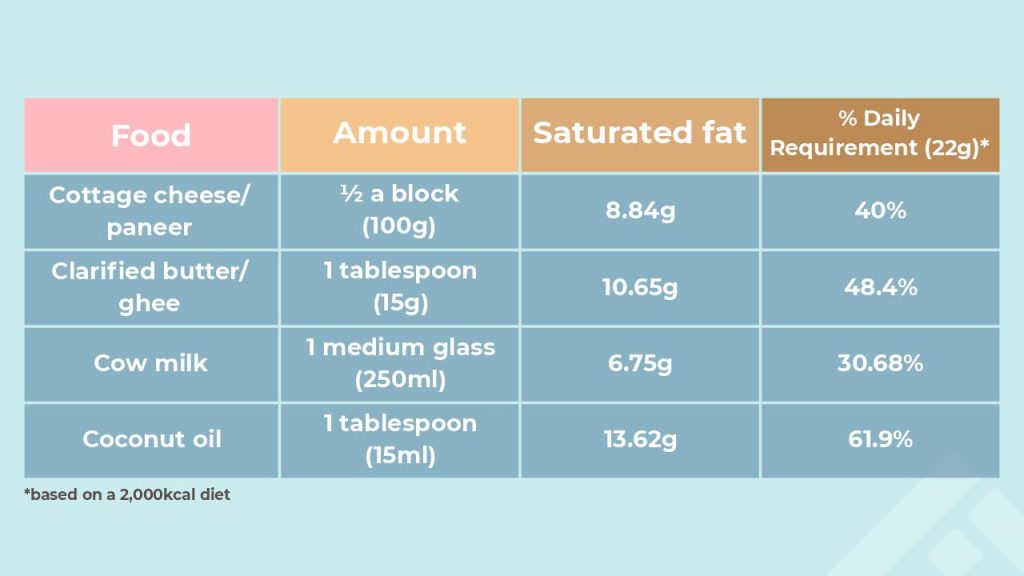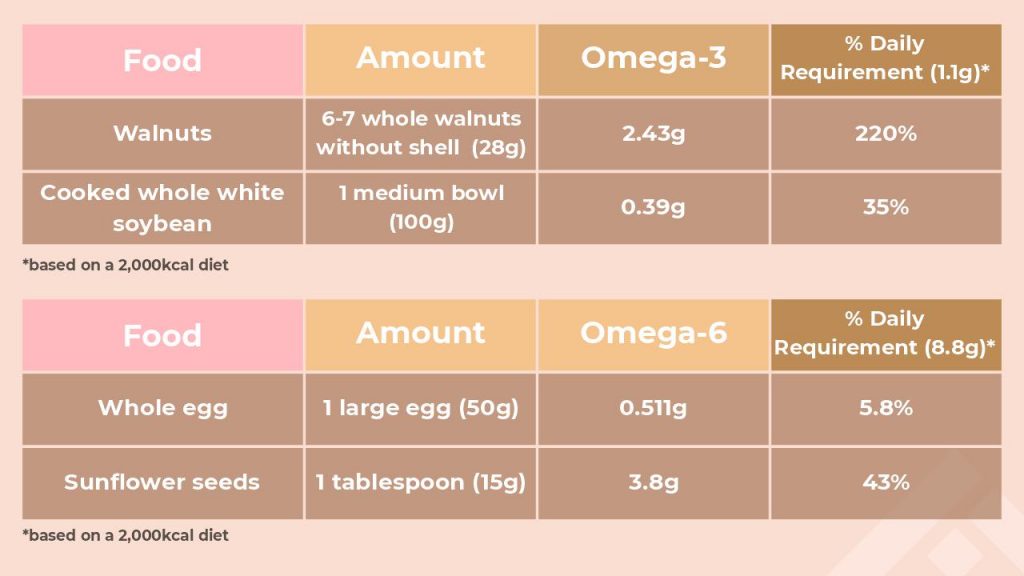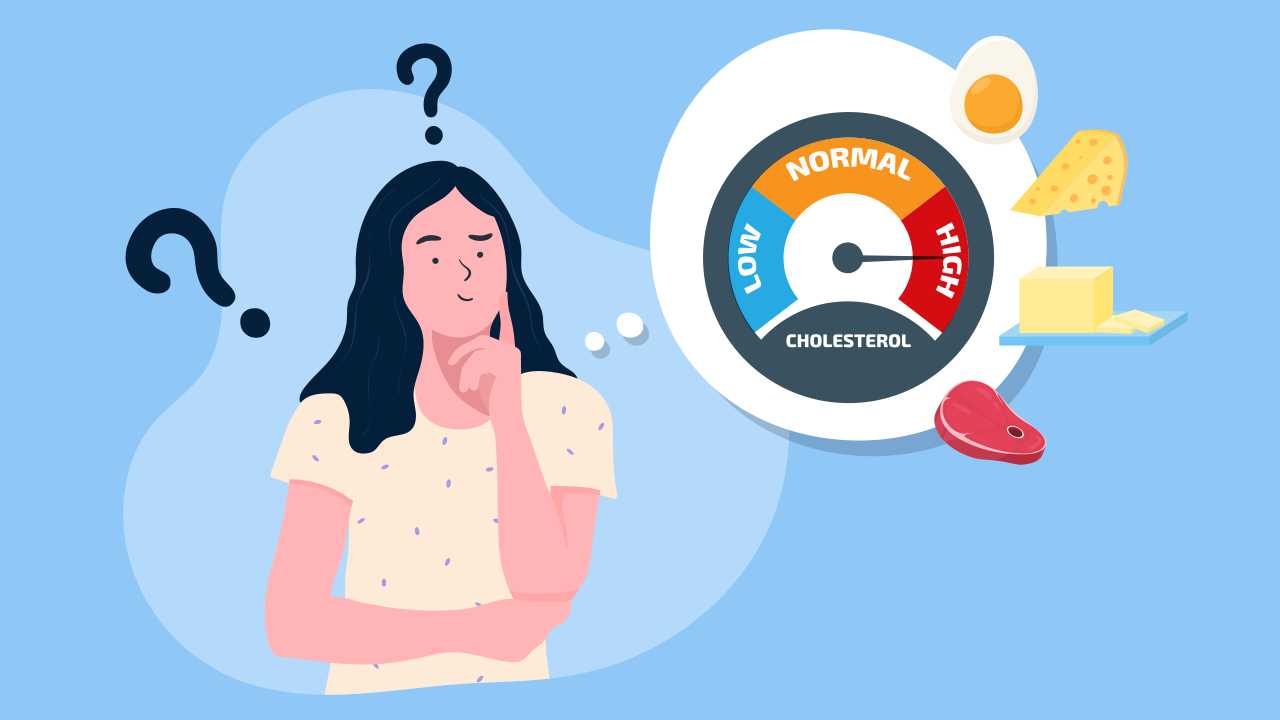
Dietary Fats: How to Choose Right and Eat Smart

Fats, one of the three macronutrients, are required by your body to function optimally. But not all dietary fats are healthy, and you must know enough to make an informed choice about which kind to include in your diet and eat smart.
How to select fats
Foods inherently contain dietary fat as a part of their composition and can be classified into visible and invisible. Fats and oils used for cooking are known as visible fat. Invisible fats are obtained from foods such as cereals, pulses, vegetables, dairy, nuts, and seeds. Your overall diet should provide both visible as well as invisible fat.
Fats, based on their chemical composition, can be further classified into saturated, unsaturated and trans fats. Usually, foods have various types of fats, with only a single type present in a dominant form.
Saturated fats
The National Institute of Nutrition (NIN), India, recommends moderate consumption of saturated fats which should be less than 10% of your daily caloric intake. For instance, someone on a 2,000kcal diet may consume up to 200kcal or 22g of saturated fat in a day (1g fat = 9kcal). You could look to split this among your all meals of the day.
Check out how much saturated fat some of our common foods contain:

Coconut oil and palm oil are plant-based sources. Fruits and nuts also contain some amount of saturated fat, though not in significant quantities. Animal sources are butter, cheese, ice-cream, and red meat (mutton, beef). Packaged foods like chips, biscuits, and cakes also contain saturated fat. You can check the nutrition labels of these products to know the amount of saturated fat present in them.
Eat smart
1. You would need to moderate the amount of saturated fat you consume through your diet. A good way to go about it is to select poultry meat such as chicken and turkey over red meat like pork, mutton, and beef.
2. Avoid packaged foods (like cookies, pastries) and restaurant foods if they contain saturated fats such as butter and cheese in case it exceeds more than 10% of your daily caloric intake.
Also read: Macronutrients: What Are They? Why Do You Need Them?
Unsaturated fats
Unsaturated fats are beneficial for health and further branch out into two types — monounsaturated fats (MUFAs) and polyunsaturated fats (PUFAs).
Foods such as olive oil, peanuts, almonds, avocado, pumpkin seeds, and sesame seeds are high in MUFAs. PUFAs are found in walnuts, sunflower oil, flaxseed, soybean, fatty fish, and fish oil.
PUFA further includes omega-3 and omega-6 fats. The NIN suggests that 0.5%-1% of total daily calories should include omega-3 fats and 4%-10% should be from omega-6 fats. For an individual on a 2,000kcal diet, this would be 1.1g-2.2g of omega-3 and 8.8g-22.2g of omega-6, respectively.
The following are some food sources that are rich in omega-3 and omega-6:

There are three types of omega-3 fats.
ALA: Found in plant-based sources like spinach, flaxseeds, chia seeds
EPA: Found in oily fish (mackerel, tuna, salmon), shellfish, and algae
DHA: Found in oily fish (mackerel, tuna, salmon), shellfish, and algae
EPA and DHA are vital for brain function, eye health, and may lower inflammation among various other functions. Plant-based sources of ALA are not converted effectively in the body to EPA and DHA. Vegans and vegetarians, therefore, should ensure they consume adequate amounts of foods rich in omega-3. In case of deficiencies, they might be required to take supplements containing EPA and DHA under medical supervision.
Eat smart
1. You may include 3-4 servings (1 serving = 100g) of dark leafy greens like spinach or kale in a week in your diet. The NIN suggests consuming one to two meals containing 100g of fish such as mackerel, tuna, or salmon in a week.
2. Spirulina, seaweed, and algae are concentrated sources of DHA and/ or EPA. They are available as powders, capsules, or oil (algal oil) and may be used as supplements in addition to other dietary sources of omega-3.
3. Sprinkle a teaspoon of some freshly ground flaxseed on your curries, soups, and salads. Other seeds such as sunflower, pumpkin, and chia are also packed with nutrients and also add a distinct nutty flavor to foods.
4. A handful of overnight-soaked nuts like almonds and walnuts may be a great addition to your breakfast oatmeal porridge or even work as a quick snack option.
Trans fat
Trans fats have no nutritional benefit and may work towards lowering your HDL (or good) cholesterol and also increasing your LDL (or bad) cholesterol. A person on a 2,000kcal diet is recommended to consume less than 1% trans fat of daily caloric intake (<2g).
Trans fat mentioned on the nutrient label should ideally be ‘0’ for a product that you decide to buy. Also, look out for ingredient labels that have trans fat mentioned as “partially hydrogenated oil” or “hydrogenated fat”.
Also read: Can You Use Fat As an Energy Source for Running?
Eat smart
Here are foods high in trans fats that you ought to look to minimize in your diet.
1. Avoid the consumption of baked goods (biscuits, pastries, bread, doughnuts), packaged foods (ready-to-eat foods, sweets, miscellaneous savory snacks), and deep-fried fast foods (chips, french fries).
2. Use non-hydrogenated oils instead of saturated or partially hydrogenated fats, like vanaspati and margarine.

Lack of essential fats may have an impact on many aspects, such as heart health, nerve and hormonal functions, fertility, and nutrient absorption. So, foregoing them entirely would definitely be detrimental to your health. On the other hand, overloading on any single type of fat is not wise either. Remember, balance is key.
References
1. Tvrzicka E, Kremmyda LS, Stankova B, et al. Fatty acids as biocompounds: their role in human metabolism, health and disease–a review. Part 1: classification, dietary sources and biological functions. Biomed Pap Med Fac Univ Palacky Olomouc Czech Repub 2011; 155: 117–30.
2. Guasch-Ferré M, Babio N, Martínez-González MA, et al. Dietary fat intake and risk of cardiovascular disease and all-cause mortality in a population at high risk of cardiovascular disease. Am J Clin Nutr 2015; 102: 1563–73.
3. Mozaffarian D, Micha R, Wallace S. Effects on coronary heart disease of increasing polyunsaturated fat in place of saturated fat: a systematic review and meta-analysis of randomized controlled trials. PLoS Med 2010; 7: e1000252.
4. Saturated fat. American Heart Association. https://www.heart.org/en/healthy-living/healthy-eating/eat-smart/fats/saturated-fats (accessed Mar 12, 2021).
5. No need to avoid healthy omega-6 fats. Harvard Health Publishing. https://www.health.harvard.edu/newsletter_article/no-need-to-avoid-healthy-omega-6-fats (accessed Mar 12, 2021).
6. Grajzer M, Szmalcel K, Kuźmiński Ł, et al. Characteristics and Antioxidant Potential of Cold-Pressed Oils-Possible Strategies to Improve Oil Stability. Foods 2020; 9: 1630.
7. The Skinny on Fats. American Heart Association. https://www.heart.org/en/health-topics/cholesterol/prevention-and-treatment-of-high-cholesterol-hyperlipidemia/the-skinny-on-fats (accessed Mar 15, 2021).
8. Saunders AV, Davis BC, Garg ML. Omega-3 polyunsaturated fatty acids and vegetarian diets. Med J Aust 2013; 199: S22–6.














